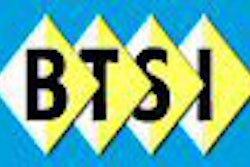Dear Radiation Oncology Insider,
We're focusing on a low-tech solution to resolve a high-tech problem in this edition's Insider Exclusive. Most radiation oncology facilities work at capacity with not a minute to spare when scheduling patients. Therefore, finding low-tech "gadgets" to reduce treatment time for patients requiring respiratory-gating techniques is a real discovery that you may wish to adopt. Click here to learn about the successful approach Belgian researchers used.
Juxtaposing low tech against very high tech, an excellent article on proton therapy use at M. D. Anderson Cancer Center is provided courtesy of Tami Freeman, science editor at Medicalphysicsweb. Proton therapy provides a lower risk of developing second cancers, a concern of utmost importance to pediatric patients.
To keep patients who've survived pediatric cancers healthy, a database is being launched to provide their physicians with an individual set of specifications for follow-up treatment and testing. You will want to read about this amazing Passport for Care initiative and share this article with others.
Because childhood cancer survivors are more susceptible to breast cancer, and they are being diagnosed at an earlier age, we hope that treatment technologies will offer more options. Use of accelerated partial-breast irradiation is broadening, and we bring you two reports -- one on clinical trial results that suggest the age limit be dropped by as much as 15 years, and the other describing the treatment flexibility offered by multicatheter single-entry brachytherapy devices.
There has been a lot of news to report in our Radiation Oncology Digital Community in the past six weeks. We hope you've noticed this increase in coverage by AuntMinnie.com. The challenge of selecting a few articles to highlight in this newsletter has been difficult, so be sure to scroll down for links to more radiation oncology news.
We'd like to hear from you about any topics you'd like to see covered. Please feel free to e-mail me with your suggestions.



















